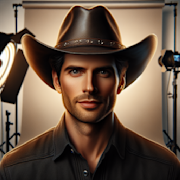Classic Films in 3D: Exploring the Experimentations of Depth

In the world of cinema, the use of 3D technology has become increasingly popular in recent years. While 3D films are typically associated with modern blockbusters, there have been some interesting experiments with applying this technology to classic films. By adding an extra dimension of depth to these beloved movies, filmmakers have been able to create an entirely new viewing experience for audiences. In this blog post, we will explore some of the ways in which classic films have been reimagined in 3D and the impact this has had on the cinematic landscape.
The Evolution of 3D Technology in Cinema
Before we delve into the world of classic films in 3D, it’s important to understand the evolution of 3D technology in cinema. The use of 3D in filmmaking dates back to the early 20th century, with the first 3D film, “The Power of Love”, released in 1922. However, it wasn’t until the 1950s that 3D technology really started to gain traction with films like “House of Wax” and “Creature from the Black Lagoon”. These early experiments with 3D were somewhat primitive compared to the sophisticated technology we have today, but they laid the groundwork for the immersive viewing experience that 3D films provide.
Classic Films Reimagined in 3D
One of the most fascinating aspects of classic films being reimagined in 3D is the opportunity to experience these beloved movies in a whole new way. By adding depth to the images on screen, filmmakers are able to create a more immersive and visually stunning viewing experience. For example, the classic film “The Wizard of Oz” was re-released in 3D in 2013, allowing audiences to see Dorothy’s journey through Oz in a way that had never been possible before. The vibrant colors and intricate set designs of the film were brought to life in a way that felt fresh and exciting, despite the film being nearly 75 years old.
The Impact of 3D on Classic Films
The decision to convert classic films to 3D is not without controversy. Some purists argue that adding an extra dimension to these movies detracts from their original artistic vision. However, others see it as a way to breathe new life into old favorites and introduce them to a new generation of viewers. Ultimately, the impact of 3D on classic films is a matter of personal preference. While some may prefer to stick with the original 2D versions, others may appreciate the opportunity to experience these films in a new and innovative way.
Challenges and Limitations of Retroactively Adding 3D
Retrofitting classic films with 3D technology is not without its challenges. One of the biggest obstacles faced by filmmakers is the need to carefully convert each frame of the film into 3D without losing the integrity of the original footage. This requires a delicate balance of technical expertise and artistic vision to ensure that the final product is both visually striking and true to the original film. Additionally, not all films are well-suited to the 3D treatment, and some may be better left in their original format.
Conclusion
In conclusion, the use of 3D technology in classic films represents an intriguing intersection of nostalgia and innovation. By reimagining beloved movies in 3D, filmmakers have the opportunity to introduce these timeless classics to a new generation of viewers while also offering longtime fans a fresh perspective on familiar stories. While the decision to convert classic films to 3D is not without its challenges, the potential rewards in terms of visual impact and viewer engagement make it a compelling experiment in cinematic storytelling. Whether you prefer the original 2D versions or are open to exploring the world of classic films in 3D, there’s no denying the power and potential of this technology to reshape the way we experience cinema.

Alberto Miller
Movie Fanatic
More From Classics Authority Movies

Movie
Classic Horror Movies That Still Haunt Our Dreams

Movie
The Adventures of Robin Hood (1938)

Movie
The Day the Earth Stood Still (1951)

Movie
Toy Story (1995)

Movie
The Breakfast Club (1985)

Movie
From Stage to Screen: Classic Movie Musicals that Stole the Show





